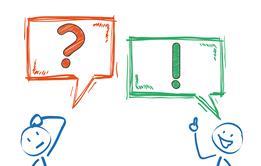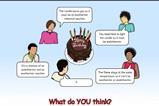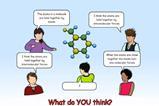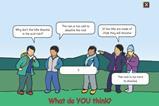What do you think about rusting?

This concept cartoon is designed to provoke discussion and stimulate thinking around rusting.
Use it with groups of students to elicit students’ ideas.
If you teach primary science, see the headings below to find out how to use this resource:
Skill development
Children will develop their working scientifically skills by:
- Drawing conclusions and raising further questions that could be investigated based on their data and observations.
- Using evidence from a range of sources to support and refute ideas.
- Asking their own questions about scientific phenomena.
- Selecting and planning the most appropriate ways to answer science questions, recognising and controlling variables where necessary, including:
- Carrying out comparative and fair tests.
Learning outcomes
Children will:
- Explain that some changes result in the formation of new materials, and that this kind of change is not usually reversible.
Concepts supported
Children will learn:
- What happens in the process of rusting, in simple terms.
- The conditions required for rusting to occur.
- That rusting is an example of an irreversible change.
Suggested activity use
This activity is useful when used in conjunction with other resources looking at reversible and irreversible changes. Alternatively, you could use this as an opportunity for a whole-class discussion at the start or end of a lesson, by showing it on an interactive whiteboard or handing out paper copies.
You could also focus on a small group if you want to assess reasoning skills.
The follow-up activities provided also give an opportunity for an investigation to be carried out which would explain the ideas involved.
Practical considerations
Nails, beakers and oil or petroleum jelly will need to be provided if children are to carry out the rusting nail experiment.
You may wish to research the process of rusting and the requirements beforehand, so you have the background knowledge to be able to tackle children’s ideas and potential misconceptions. For example, a misconception that may be introduced or reinforced if not carefully managed, is that removing the rust from the nail is reversing the reaction. The new material (rust) has still formed and hasn’t been converted back to the original material.
Downloads
Rusting
Handout | PDF, Size 1.2 mb
Additional information
Concept Cartoons are cartoon-style drawings that put forward a range of viewpoints about a particular situation. Concept Cartoons are normally used to promote a group discussion.
We have partnered with Millgate House Education to provide a selection of the Concept Cartoons. To learn more about Concept Cartoons and how they are used, visit: www.millgatehouse.co.uk

Science Concept Cartoons

Encourage group discussions with these concept cartoons
- 1
- 2
- 3
- 4
- 5
 Currently
reading
Currently
reading
Rusting
- 7



































No comments yet